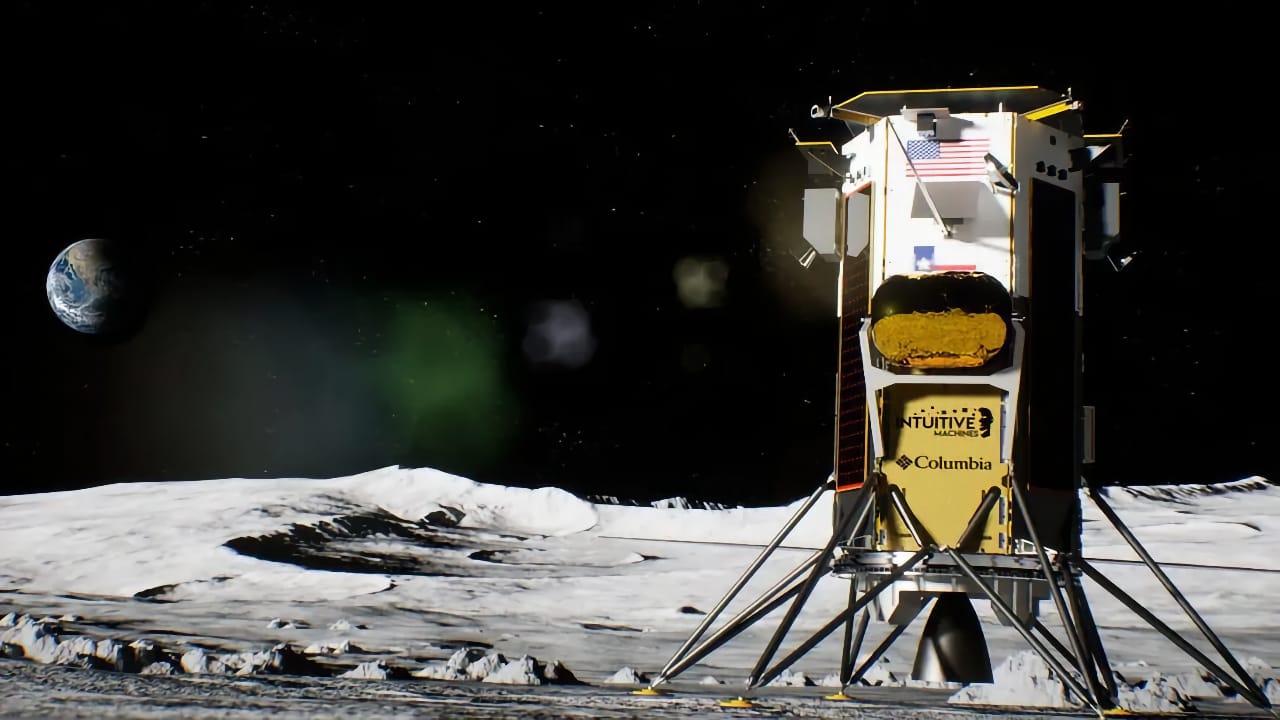
Late in the evening on February 22, the robotic lander Odysseus, built by Houston-based company Intuitive Machines, touched down near the lunar south pole and marked the first US presence on the Moon since 1972.
The last time the USA had a presence on the Moon it was December 1972. Richard Nixon was in the White House, Me & Mrs Jones was Number One in the US charts (the UK had to suffer the great Chuck Berry’s worst-ever song, My Ding-a-Ling), and The Poseidon Adventure was in the cinema.
In other words, it was a long time ago. Our story on How NASA captured lunar lift-off of the Apollo 17 mission still gets a regular amount of traffic, proving that interest in lunar exploration remains high, even though the comments section has a stubborn section of commentators that refuse to believe it ever happened. Well, both sides of that argument (the right one and the frankly wrong one) will have more to talk about now as the USA is back on the lunar surface once more, albeit in dramatically scaled-back robotic form.
There’s another landmark attached to the robotic lander Odysseus’s successful landing near the lunar south pole yesterday, too; this is the first time that a private spacecraft has ever soft-landed on the Moon.
After troubleshooting communications, flight controllers have confirmed Odysseus is upright and starting to send data.
— Intuitive Machines (@Int_Machines) February 23, 2024
Right now, we are working to downlink the first images from the lunar surface.
The 14ft (4.3 meters) hexagonal, six-legged Nova-C lander is part of Nasa’s commercial lunar payload services (CLPS) initiative, which looked to partner the agency with commercial partners as a way of keeping costs down. Odysseus was built by Texas-based Intuitive Machines and is the second attempt at a CLPS lunar mission. The first, Peregrine Mission One, suffered a catastrophic fuel leak not long after launch and was steered into a controlled demise on January 18.
Two other private landers were lost in recent years, too, though established national space organizations, including India and Japan, have had better luck.
The tl;dr of all this is that space is hard, and future crewed missions will be even harder and have much more jeopardy attached to them That’s not to say that Odysseus had an easy time of it. Its laser rangefinding system, critical to being able to stick the landing, was found to be malfunctioning on approach, and one of its 12 mission payloads had to be quickly repurposed, patched, and pressed into service instead.
We should hopefully know soon just how successful that has been, especially as how one of the payloads is EagleCam, a camera system built by students designed to deploy 100 feet (30 meters) above the surface and take photos of the lander's epic touchdown from below. We’ll update when we know more.
[Update: Turns out the EagleCam was powered down during descent what with everything else going on. And, after a certain amount of puzzling while the team worked out why Odysseus was behaving quite the way it was, it turns out that the probe tipped over onto its side just before landing.]
Tags: Technology Space 16mm


Comments